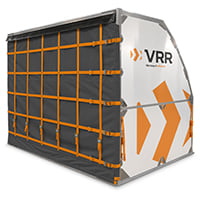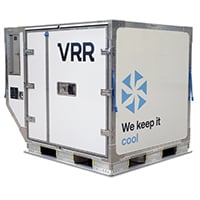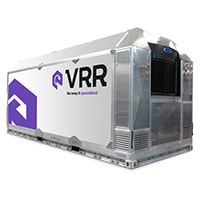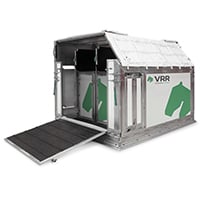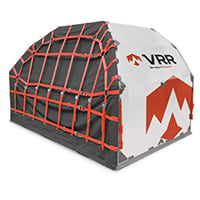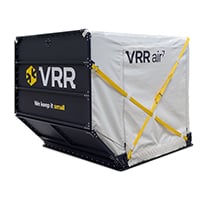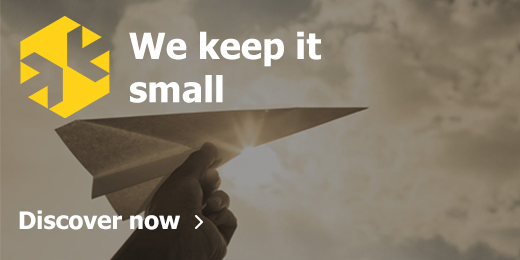For two years our R&D team has been researching and developing the world’s first inflatable AKE. They’ve done a brilliant job so far, but it hasn’t all been smooth sailing. Turning a madcap idea into a prototype that can be launched at the World Cargo Symposium stretched even their top-class engineering and design talents. On top of that, they’ve had to deal with the outfall of a global pandemic.
We knew from the outset that, to be successful, the latest VRR air cargo container—which we have named the Air7—would have to be:
- a solution to an industry-wide problem
- technically feasible
- economically viable in terms of cost, price and return on investment
- completely airworthy
Unless we could meet all four criterion, this project wouldn’t get off the ground, no matter how innovative it was.
In our previous article, we showed you the lengths our people had to go to in order to create a fully-functional prototype that ticked the first three boxes. In this article, we explain what we have to do to tick that fourth box: proving to the relevant regulatory bodies that the Air7 is robust enough to cope with all likely and extreme circumstances during flight.
We also look at the product development process itself and explain why it can take a long time to get a new product launched.
July 2020–March 2021: Getting the Air7 tested and certified
Having ironed out the last few design and engineering wrinkles, the R&D team have now entered the final—and arguably most important—phase of the project: testing and certification.
Verifying aviation compliance is vital in our industry. After all, air cargo containers (or unit load devices) are actually an aircraft component. What’s more, they’re the only component to leave the control of an airline and pass through countless unregulated hands.
So, all of the products that we manufacture are approved by the relevant civil aviation regulatory bodies, the main ones being the European Union Aviation Safety Agency (EASA) and the Federal Aviation Administration (FAA).
The scope of the testing and certification phase is as deep as it is wide:
- Environmental degradation and material durability: The materials that we use to construct the inflatable AKE have to stand the test of time and the rigours of air transportation. We must prove that they are durable and that they won’t corrode, oxidise or tear too quickly or easily. We also need to demonstrate that the material is weatherproof, non-flammable and flame retardant.
- FEM analysis / strength calculations: Simulation studies using the Finite Element Method (FEM) are carried out to evaluate the inflatable AKE’s strength, which are based on regulation-prescribed ultimate loads, as well as the material testing.
- Full-scale testing: We wait around for the results of the FEM analysis. As soon as we get them, we can set about validating the strength of the inflatable AKE by carrying out a full-scale test on the prototype. How long that takes depends greatly on the analysis (which may require us to make some adjustments) and the results of the strength testing (which may or may not require design modification).
- EASA certificate: The final step in this phase is to submit all the evidence (test reports, FEM analysis, technical and airworthiness product data evaluation, etc.) to EASA. Once the regulatory body approves all the compliance documentation, it issues a certificate of airworthiness, and production can begin.
It’s a tense time for the team because the inflatable AKE is a completely new product, and there are still some unanswered questions. The main risks facing the team are
- Failure to comply with the regulation-prescribed ultimate loads;
- Failure to get the new fabric/inflatable materials certified for a product in an ‘aluminium-orientated’ market.
The team’s aim is to do all the strength analysis and testing in the second half of 2020. If that goes according to plan, VRR can apply for certification in the course of the first quarter of 2021. After that, production of the pilot series of the inflatable AKE is underway.
Why is it taking so long to develop the inflatable AKE?
It’s tempting to answer this question by saying, “Hey, taking two years to create a completely new and innovative product that will help solve an industry-wide problem is pretty darn quick.” But we understand that it must seem an awfully long time to our customers (and others) who are keen to see the Air7 come into production. After all, it’s a great concept.
So, let’s highlight the elements of the product development process that affect a project’s critical path:
- Dealing with the unknown: You simply don’t know what you’re dealing with. The more radical the idea (as is the case with the Air7), the more unknowns you’re faced with. You need to learn new production techniques, discover what is physically possible, test new materials and find suitable suppliers.
- Coordinating interdependencies: It’s impossible to do everything at the same time. You have to find a solution before you can build, and you have to test a product before you can validate the solution. Moving a product through a development process demands identifying all of its interdependencies and coordinating everyone’s efforts. Each step is taken in order, and you can’t take the next step until the previous one has been completed. For example, it’s no good testing a material for degradation, until your research proves that it’s the most suitable material for your product; that it’s cost-effective and that you can source it easily. Likewise, you can’t carry out the FEM analysis until you have a working prototype.
- Managing lead times: Every step and every activity takes time when developing a product, but when you’re developing a completely new concept, those steps take even longer. From developing a 3D model and 2D drawing of the product and surveying potential users to finding the right detailed solutions that integrate with the rest of the design, each activity has a lead time. Some have longer lead times than others; others are out of your hands.
- Understanding the integral nature of a product: All aspects of a product need to work together. It’s no good having a functional product that is aesthetically pleasing but isn’t needed by the market. Equally, you can’t have a product that is light-weight and compliant, yet too costly to produce. Each integral component has an impact on at least one other component.
- Conducting experiments: No new product can be made without experimentation. And the more complex the product, the more experiments that have to be carried out. You learn by doing research, synthesising ideas, building prototypes and observing results. And then starting all over again, retaining the good parts and refining the aspects that didn’t turn out so well. This iterative process can continue throughout the entire development project.
As you can see, the product development process is neither quick nor simple, especially for a moving, engineered product like the Air7. Many challenges arise during the whole process, as you work from an abstract level down to a more detailed level. And there’s no telling how many cycles of iteration you’ll have to go through until you get a fully-functional prototype.
Arriving at a prototype that can be demonstrated to the world is not the end of the story, of course. A prototype is simply an early model of the final product. You still need to refine details, process user feedback, and overcome remaining challenges before you can start investing in production. And in the case of a Unit Load Device, there’s a rigorous testing and certification phase to complete as well.
All in all, developing an innovative air cargo container like the inflatable AKE is a complex, time-consuming project. When something goes right, it’s party time. When something goes wrong, it’s back to the drawing board. And some things we just don’t see coming at all…
Fortunately, the engineers and designers at VRR have buckets full of perseverance, ingenuity and industry knowledge, so we’re confident that all their hard work will be rewarded in just a few months’ time.
If you’d like to know more about the Air7 or any of our other products, feel free to contact us or stay updated via our LinkedIn page.
